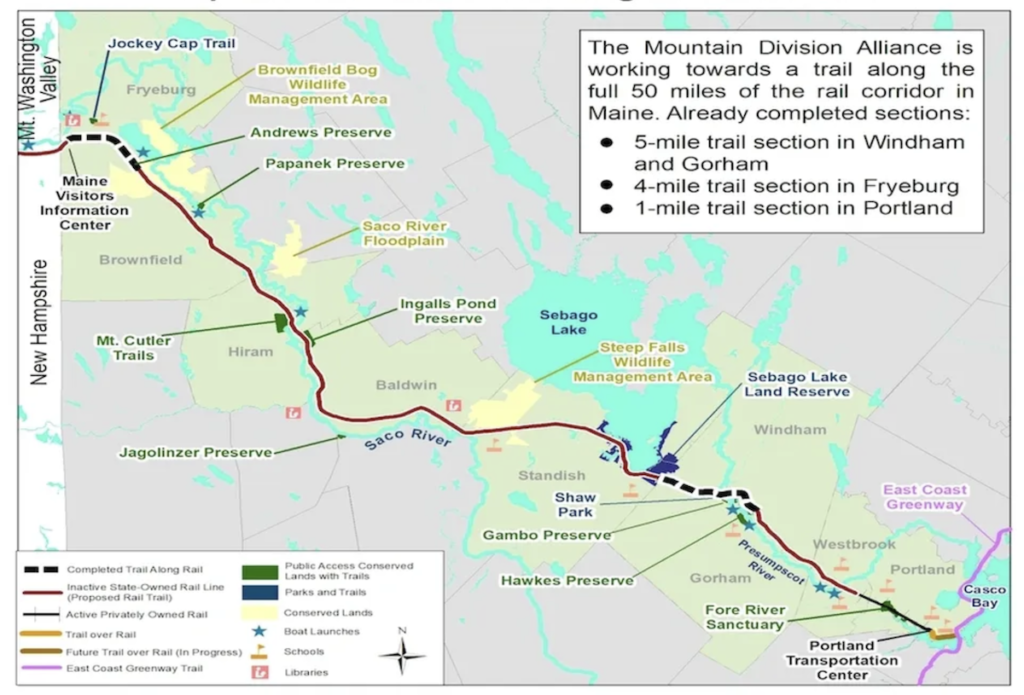
The 2 segments in dotted blue, near Fryeburg and in Gorham are the finished sections of the Mountain Divisiion Trail. The new Bill (LD 404) concerns the segment running in between which roughly follows the Saco River and passes through a number of already protected scenic preserves and wildlife management areas. Read the story on page 12.
Imagine getting on the Mountain Division Trail in Gorham and biking to Fryeburg for lunch, or maybe just to Steep Falls, or Westbrook or Portland, if you want to pedal at a slower speed. That dream moved another step closer to reality when Governor Janet Mills recently signed LD 404.
The passage of the Bill lays the groundwork for the transformation of 31 miles of unused rail bed running from Otter Ponds in Standish all the way to Freyburg, into a 10-foot-wide paved walking and biking trail, known as the Mountain Division Trail. This will have a big impact in Gorham.
The passage is also the culmination almost 30 years of dedicated work by the Mountain Division Alliance and the Bicycle Coalition of Maine as well as several Land Trusts, including Gorham’s which oversees the Sebago to the Sea Trail, a part of which runs concurrently with the Mountain Division Trail.
For many years, folks in Gorham have been fortunate to enjoy a 4.5-mile segment of the paved Mountain Division Trail which currently runs from Otter Ponds, in Standish, passing near the historic Gambo Fall area, to Rte 202 in South Windham. Surveying and pre-pavement work has been completed and the 4.8-mile segment is ready for the next phase, expansion from Rte 202 into Westbrook.
The Mountain Division Trail will eventually travel 50 miles and will connect Portland to Westbrook, Windham, Gorham, Standish, Steep Falls, Baldwin, Hiram, Brownfield, and Fryeburg.
The cost to remove track along the 31-mile segment and replace it with an interim trail is estimated to cost $20.1 million and will take years to complete. The Maine Department of Transportation in charged with doing the work, “subject to funding” and the completion of Municipal agreements with the various towns. Rail that is converted to trail is always considered “interim” until such time as rail were to become feasible again.
Grants and other funds will also be part of the economic mix. Experience has shown that recreational projects go hand-in-hand with business tourism development, as well as providing health benefits for local populations.


